You’ve spent a lot of time, thought, and energy making your yard beautiful, but no one can see all that hard work at night — unless you apply a little lighting magic to your landscape and gardens. The summer and fall months are the perfect time to spend evenings outdoors as a family or while entertaining. Make the most of it with a few simple steps that will transform the look of your backyard or front lawn just by adding landscape lighting.
The first step is to evaluate your outdoor space and pinpoint the areas you’d like to highlight. Look at your yard from inside the home (i.e. the window view) as well as from the street and the back. There will be obvious spots to illuminate – high-traffic areas such as patios, decks, walkways, and front or back steps – as well as more decorative areas such as gardens, trees, flower beds and shrubs that you may want to light up as well.
Overall, there are two approaches to consider in landscape lighting: selecting lighting fixtures you want people to notice, and choosing fixtures that highlight outdoor features without being seen. Fortunately, there are plenty of available styles for both.
1. Path Lighting
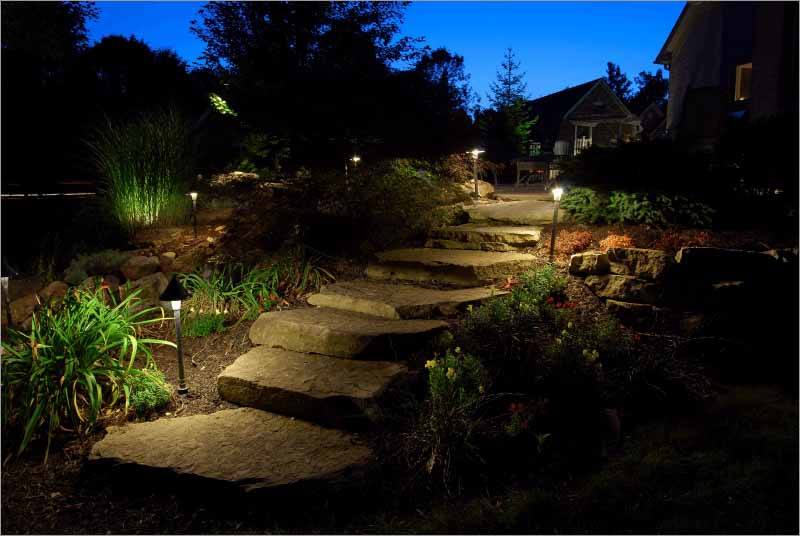
Path lighting is often the most decorative – since walkways are also used during the daytime – with styles ranging from mini lanterns hanging from shepherd hooks to post-mounted traditional and contemporary designs. If subtlety is your goal, there are shorter fixtures in a range of yard-blending finishes that rest just above the grass line. There are fixtures that come equipped with an LED light source for maintenance-free care as well as fixtures that come with incandescent bulbs that can be swapped out with LED if you choose.
Recommended path light: Hinkley Atlantis
2. Accent Lighting
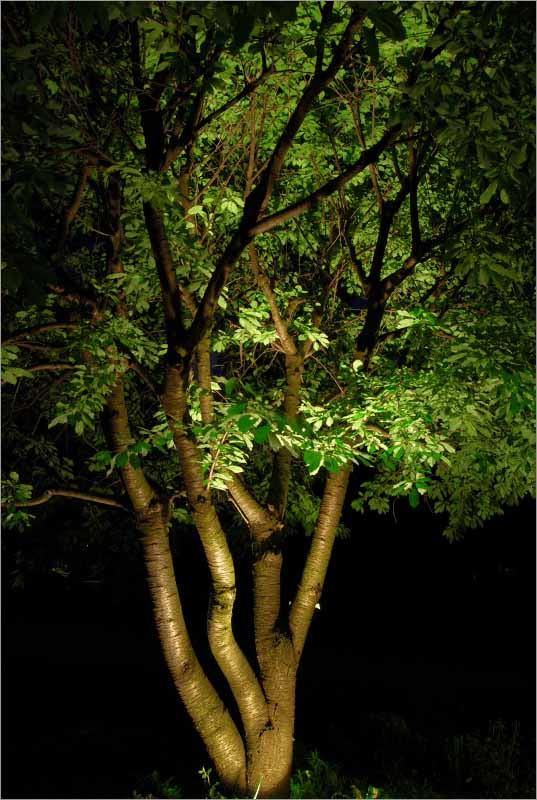
Accent or highlight lighting is especially effective for bringing attention to an object such as a statue, fountain, or tree trunk. The bright focus on an object creates visual “drama” when it is surrounded by darkness. Before securing the fixture, try positioning it at different angles to see how the shadows on the object change. Dusk is the best time to experiment with lighting because you can gauge the lighting’s effect without it being too dark to see what you’re doing. Expert tip: lighting designers often use a flashlight as an easy method for estimating the position of the fixtures to create the brightness and shadow effects desired before installing the lights.
Recommended accent light: Kichler 12 LED
3. Silhouette Lighting
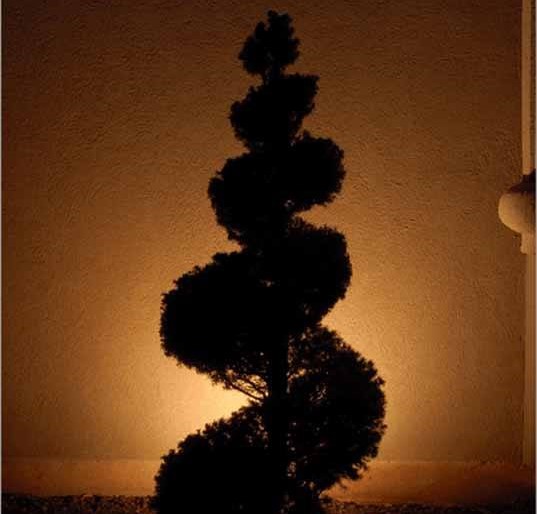
One of the most fool-proof lighting techniques is to outline a plant against a wall or side of the home by positioning a spotlight behind it. By projecting the light onto the background surface, it creates a silhouette of the plant in front.
Recommended for silhouette lighting: Hinkley Hardy Island
4. Wall-Wash Lighting
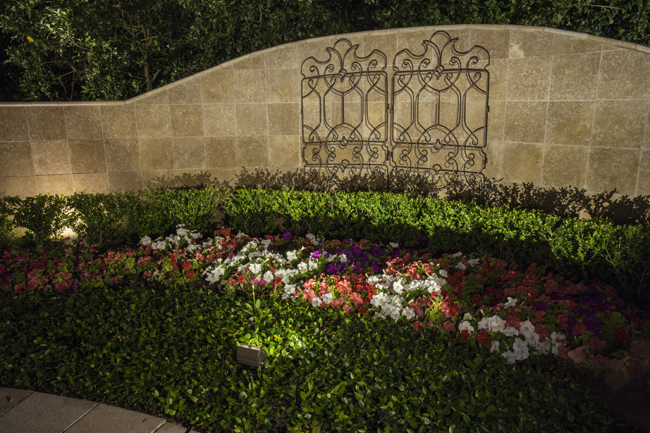
This simple technique highlights a large surface, such as a wall or entire front/side of the home. The effect is an even, shadow-free glow that immediately draws attention to a wide surface area. One of the best fixtures for achieving this look is the flood light (some models are even labeled as “wall-washers”), plus there are finish colors that blend in or coordinate with the surrounding landscape.
Recommended for wall-wash lighting: Hinkley Hardy Island
5. Uplighting
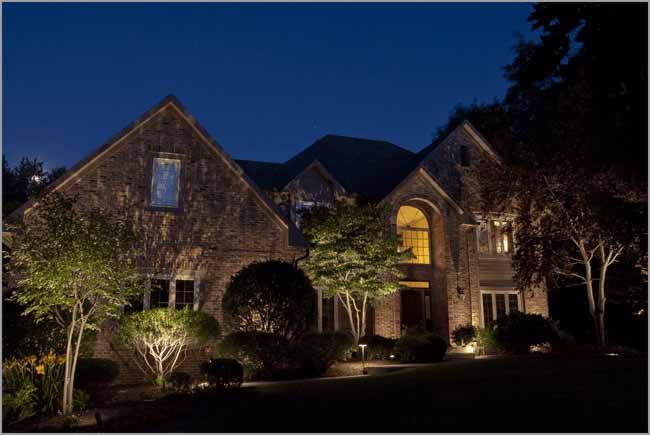
Ever notice how luxurious resort properties look when you stroll the grounds at night? Very often it’s the result of strategically placed uplights that graze tree trunks along a pathway or along the perimeter of a property, creating an impression of visual “depth.” Besides trees, uplights can also highlight the columns or architectural features on buildings. The key is to place the lighting fixture close to and below the object being uplit, such as the base of a tree or building surface; this will provide the most contrast of light and shadow. Uplighting can be achieved by using a variety of landscape lighting fixtures, many of which have a metal shield to prevent glare. For an unobtrusive appearance, look for landscape fixtures marked “well lights” or “in-ground” lights to provide uplighting without any visible fixtures showing.
Recommended for uplighting: Kichler VLO
6. Moonlighting
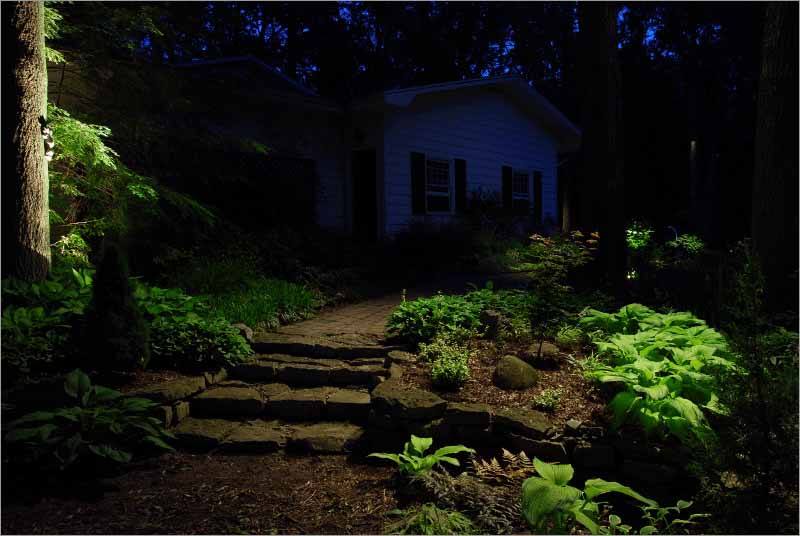
Replicating a silvery moonlit glow on the ground with soft shadows is called “moonlighting.” This effect – created by fastening downward-facing, shielded lighting fixtures high up on a tree trunk – is best reserved for properties featuring trees that do not lose their leaves seasonally, such as pines, firs, hemlocks, cedars, junipers, southern magnolias, and live oaks. When used on deciduous trees, the fixtures themselves will be much more noticeable in winter months after the leaves have fallen.
Recommended for moonlighting: Kichler Landscape MR8
Which techniques you use is a matter of personal preference and what would make sense for your property’s attributes. Have fun with the process and you will enjoy your yard’s beauty for many years to come.
Fixtures for creating all of the techniques described here can be found at LightsOnline.com, your one-stop-shop for finding everything you need to put your home and yard in the best possible light.
Read more about outdoor lighting:

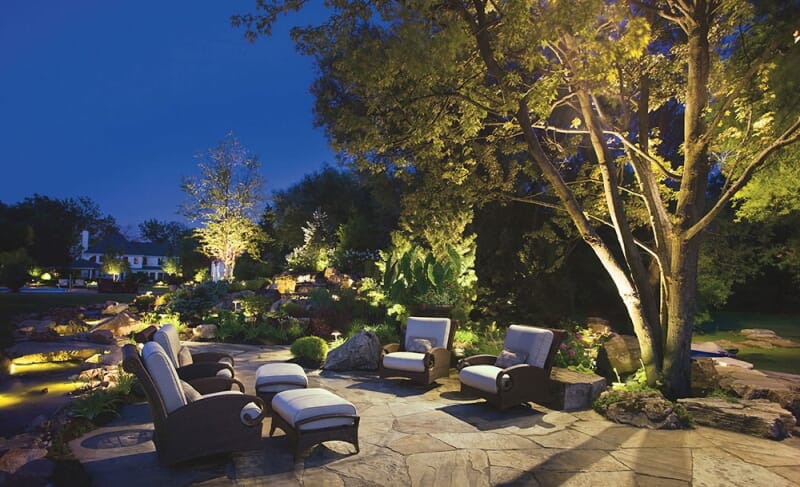



June 18, 2021
[…] 6 Simple Ways to Use Landscape Lighting […]
July 14, 2021
[…] 6 Simple Ways to Use Landscape Lighting […]